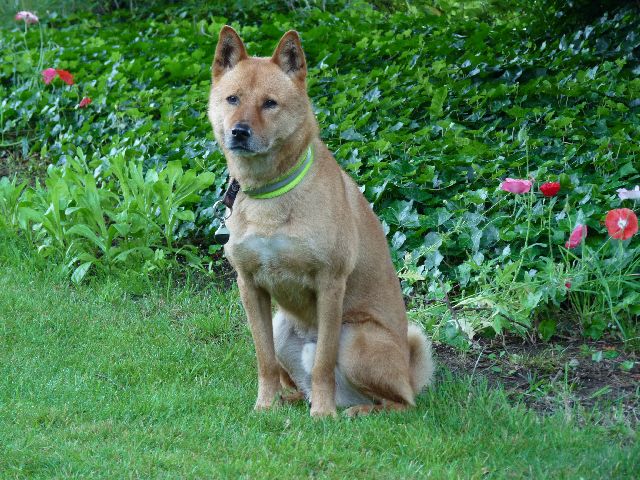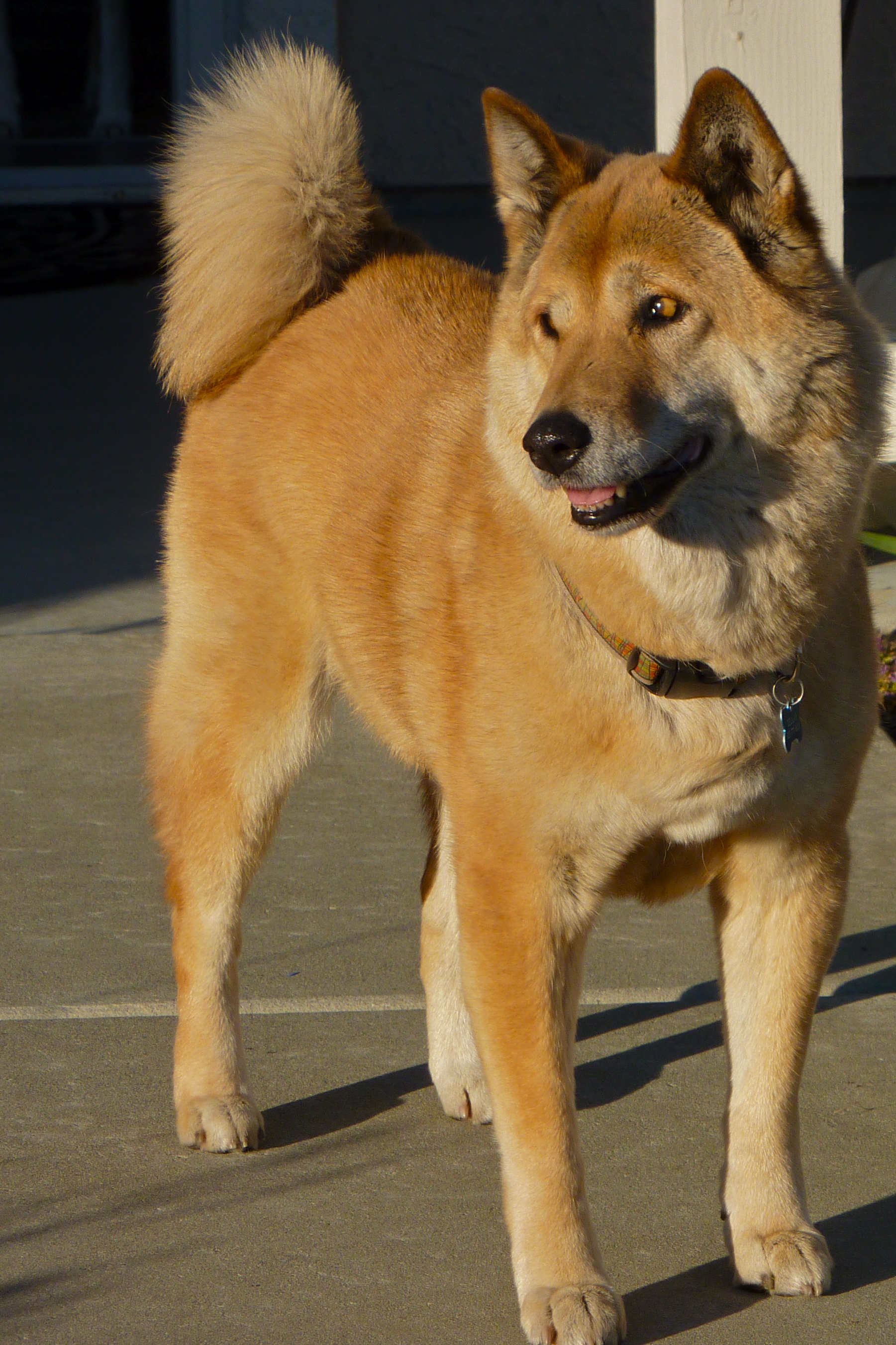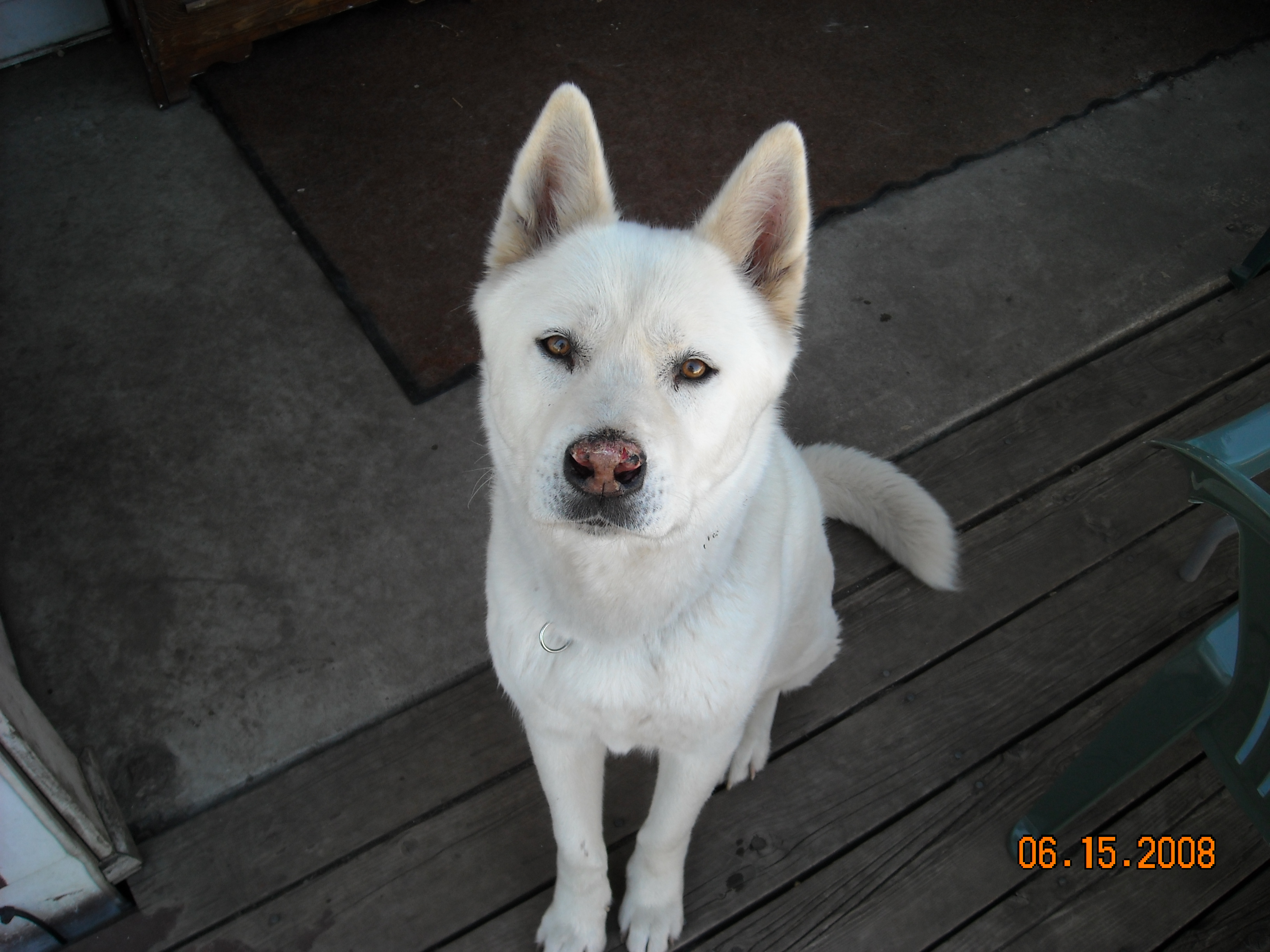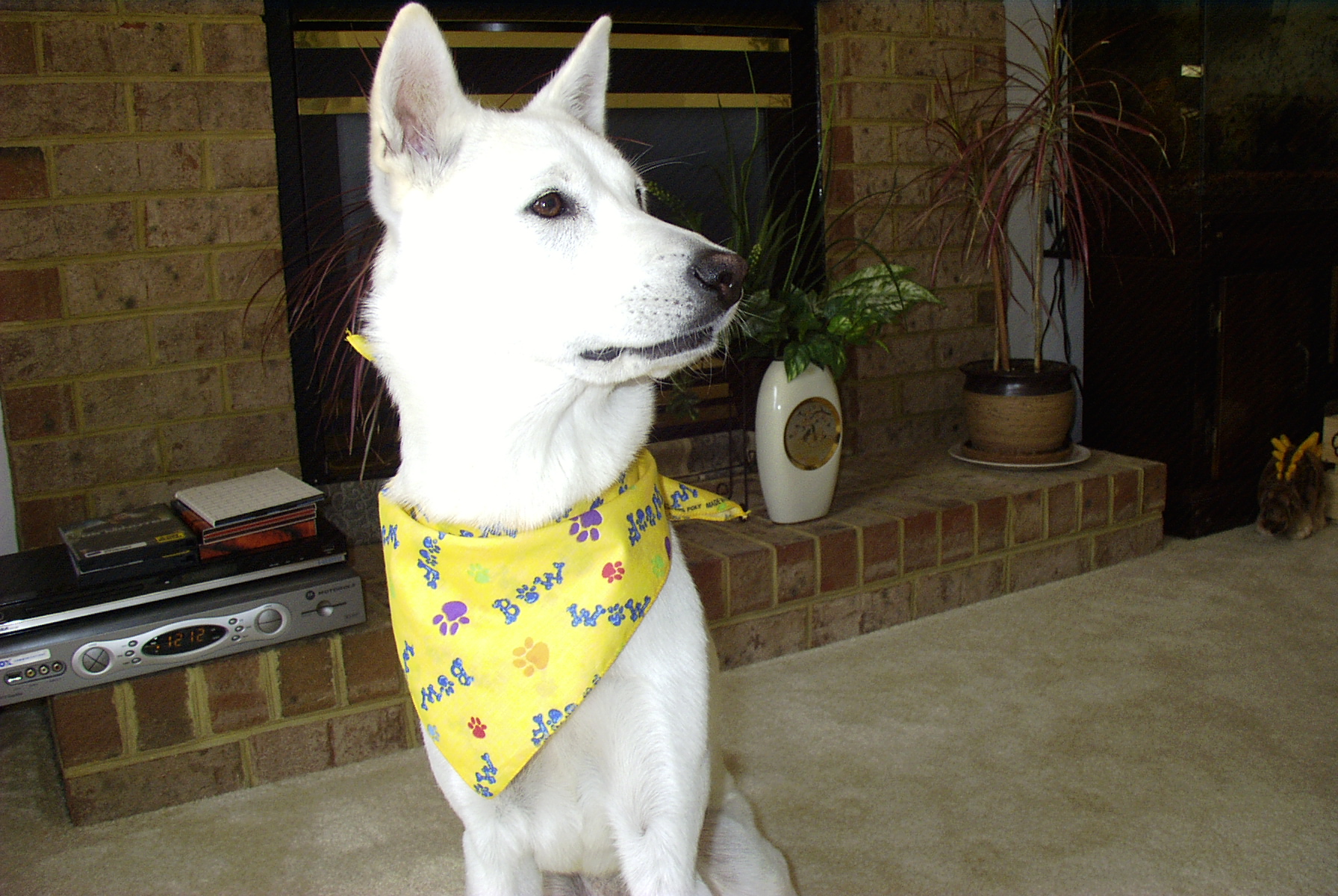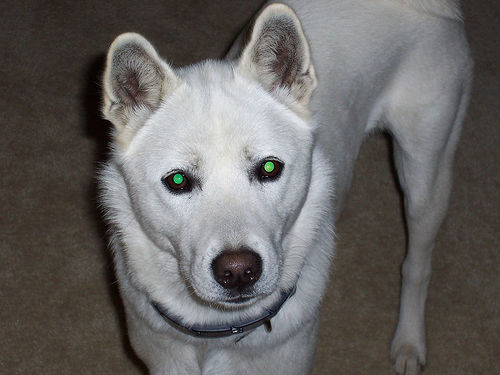
The Jindo, bred on the Korean island of Jindo, is a bright, alert looking breed, (similar in appearance to the smaller Shiba Inu and the larger Akita) with triangular ears that droop while they are puppies, but stand to attention ("prick" ears) after six months or so, dark brown eyes and a short muzzle. The Jindo has a double coat – an outer coat with straight hair that stands away from the body, especially on the neck and shoulders. The undercoat is very dense, but soft. The hairs on the cheek stand out to give the Jindo its recognizable octagonal‑shaped face. Its coat is usually a solid color: white, yellow, red, tan or black, and occasionally red and white, tan and white, black and tan, and brindle (patchy coloring). The Jindo is divided into two body types: the first is very muscular and called Tonggol, the second is slender and is called Hudu. Breeders are working to combine the two types into one. Typically, the male is larger than the female, and the female's features appear rather fox-like.
User added infoThe Jindo has a triangular face on the top and a short muzzle. They sometimes resemble a fox while in puppy hood.
add infoThe Jindo was originally bred for hunting game, and therefore has a high "prey drive," which means smaller pets such as cats, rabbits or hamsters will not be safe around them. The Jindo possesses an independent streak, and generally thinks it knows best. It is very protective, both of its loved ones and of its territory. It will become aggressive towards other dogs in order to show dominance and defend that territory. Because the Jindo is an independent breed, they require firm but affectionate handling, and should undergo obedience training as soon as possible, to let them know who is master. Their temperament will vary depending on the quality of their breeding and their home environment. The typical Jindo is very affectionate with its loved ones, but wary of strangers. Because of their territorial instincts they are excellent watchdogs.
add infoJindos are usually healthy dogs, but cases of hyperthyroidism have been reported. With proper care, a Jindo can live up to 15 years.
add infoThis breed is native to the island of Jin, off the coast of Korea, and was named a national monument in that country in 1938. It was bred to hunt game, and the breed retains a strong "prey drive." This breed is relatively rare in the United States, first appearing in the 1980s, despite the fact that Korea forbids its export.
add infoThe Jindo has a double coat that sheds twice a year. Daily brushing is necessary. The teeth should be brushed daily also.
add infoThe Jindo is a breed that craves the companionship of its owner - left alone or ignored for any length of time it will become bored, lonely and destructive. Care should be taken with any back yard fences - a jindo can climb a fence that is eight feet high! Because they are a fastidious breed, they can do well in apartments - indeed, they groom themselves in order to keep clean, like a cat, and are extremely easy to house train. But they should get at least two walks a day of thirty minutes or so.
Preferably Jindos should not be kept in apartments but rather a home with a large backyard to play in. This breed needs plenty of daily exercise.
add info| Puppies For Sale | Find a Breeder | Rescue a Dog |
|---|---|---|
| Be the First to take out an Ad! |

Berlin, DE
Die Hobbyzucht im „Butzemannhaus“ ist geprägt von Liebe und Respekt gegenüber den Tieren. Ich sehe meine Tiere nicht... |
Be the First to take out an Ad! |
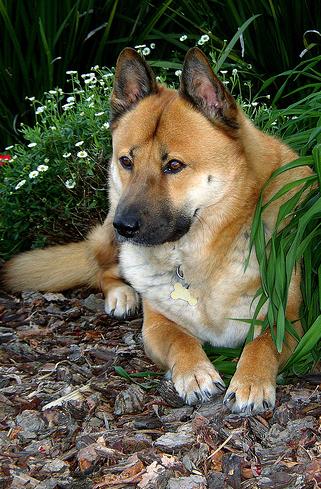 |
Does this dog ever have "bone " problems? My Jindo is ten years old and has been limping lately.. |
 |
